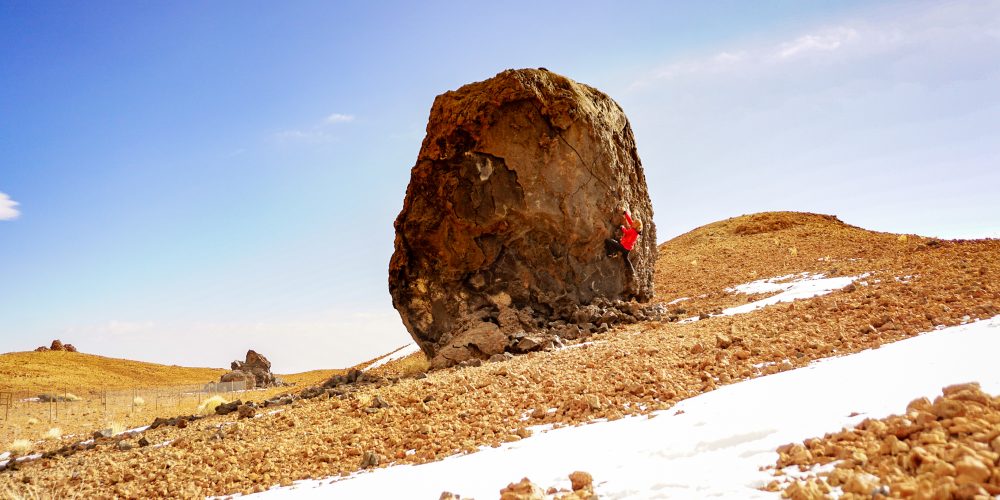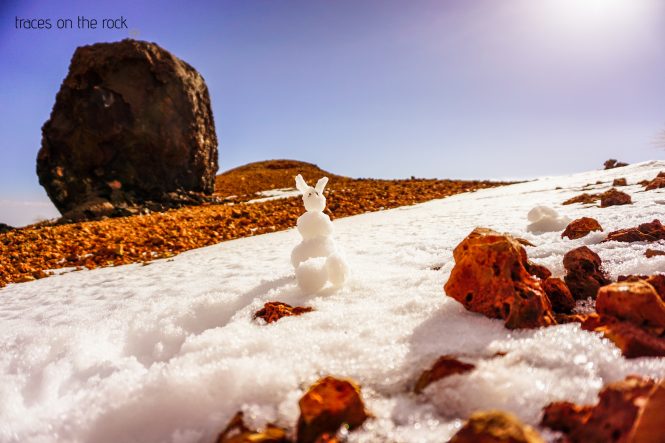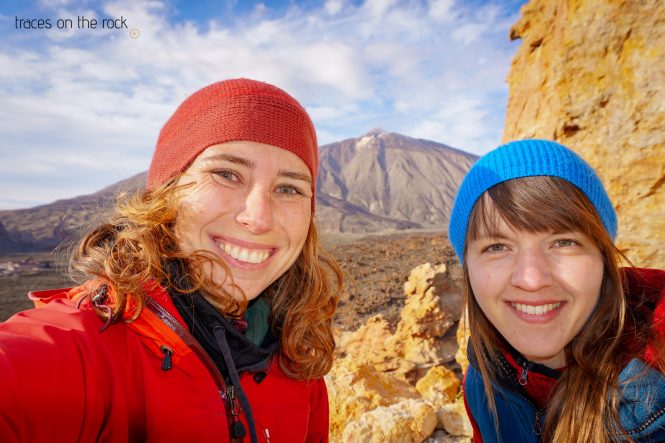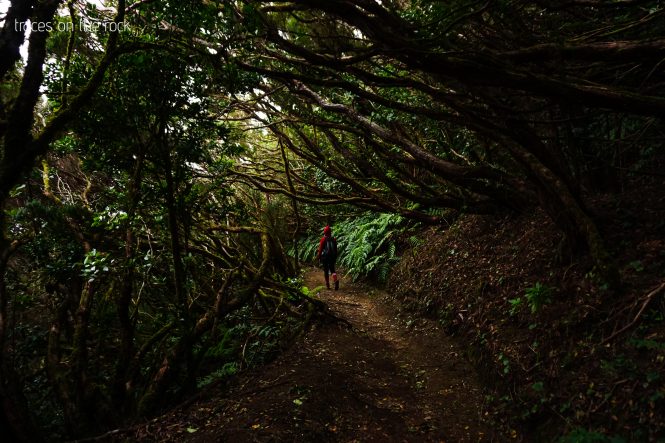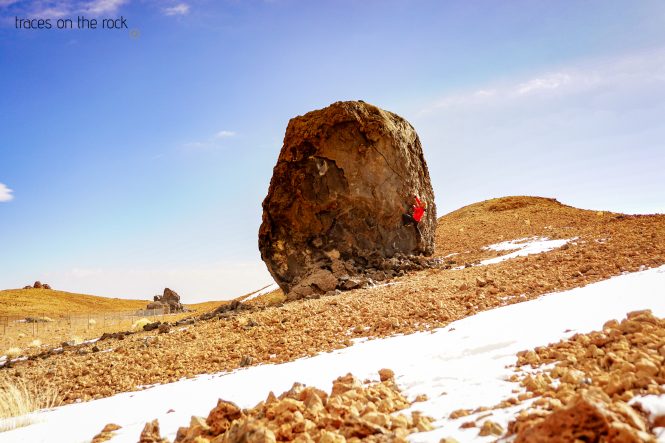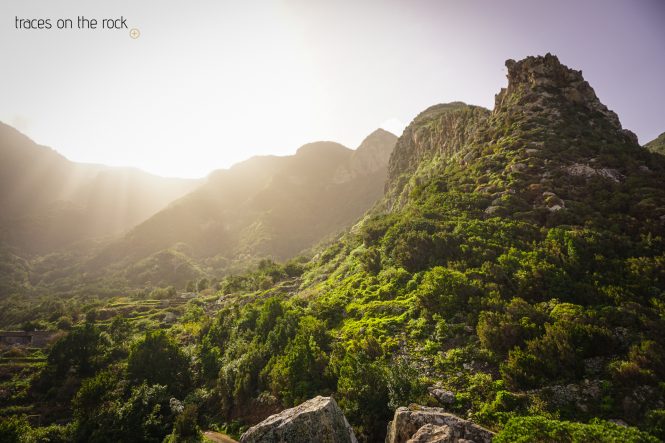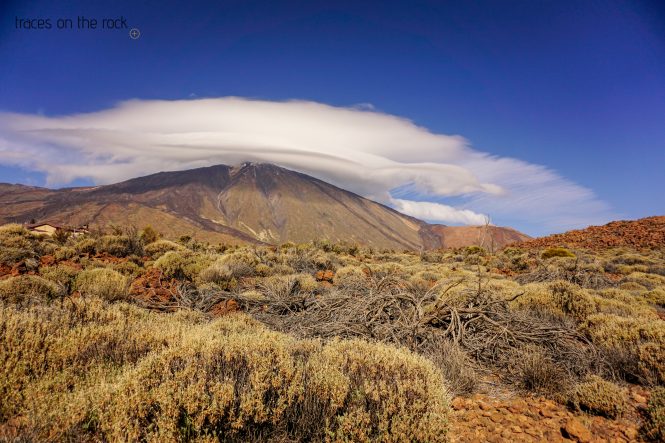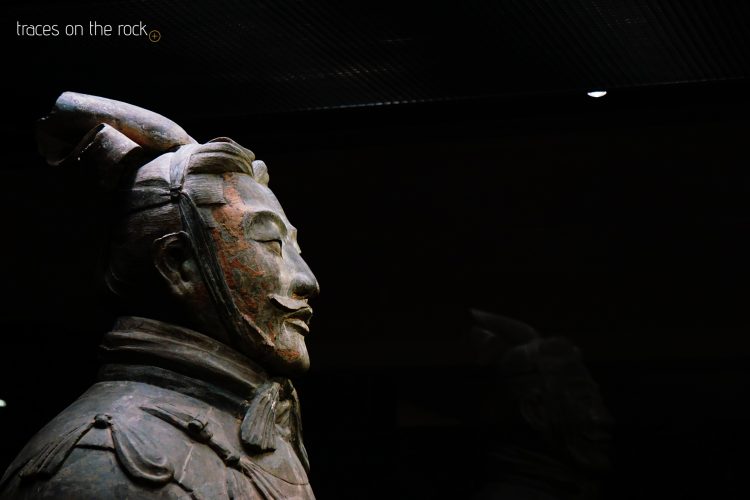Five hours later we reached the parking lot and found ourselves in a warm and red-yellow moon landscape. The landscape of the national park is so unique that it was used as a filmset for different films. The Ucanca area was even test area for the Mars robot Rover ExoMars, which was to go 2011 as part of the Aurora program of the ESA on mission. We enjoyed the bright sun and decided to go rock climbing in the breathtaking scenery of the Las Cañadas del Teide – with an awesome view of the Teide. Climbing in this area is surreal and beautiful. The actual rock climbing hotspot on Tenerife is however Arico – not to be confused with Italy’s climbing mecca Arco. But there are climbing areas all over the island. Unfortunately, not all rocks are as well-maintained as in Arico, so that the majority of the climbers can be found there.
Island of endemic species
Tenerifes history dates back more than 12 million years. The Anaga Mountains in the north of the island, with its beautiful and fairy-tale rainforests (laurel forests), is the oldest part of the island. The volcanic Teide and the Las Cañadas are of younger age. The year-round mild climate (in the south warm and dry, in the north cooler and rainier), the different high-altitude zones and the seclusion helped to develop a special flora and fauna on Tenerife. There are many endemic species. Examples include the Canary Pine, the Canary Dragon Tree, or the Cactus-like Euphorbia canariensis. In addition there are many endemic mushrooms and algae, as well as birds and lizards like the Tenerife blue chaffinch or the Tenerife giant lizard (Goliath Gallotia). Thanks to my travel companion, Julia, who brought up this new aspects into our journey.
Surfing and Diving in Tenerife
Tenerife is also a popular surfing, diving and paragliding area. The diving was particularly charming. The lava rock, which cooled in geometric shapes, fascinated me. Boxes on cuboids, cushions on pillows form a familiar landscape. As if architects had built underwater cities for the sea-dwellers.
After I did not dare to learn to surf in Bali, I had overcome myself and completed a one-week surf course. With a five-millimeter-thick wetsuit, I surfed the waves – more or less masterly. The fear of the so-called washing machine was always present, especially when the waves already built up far in the sea and became much too powerful for beginners. It was fun though, but from the fourth day on, I had no strength to catch waves anymore. My muscles were tired. Nevertheless, I would do it again, but never exchange it for climbing.

